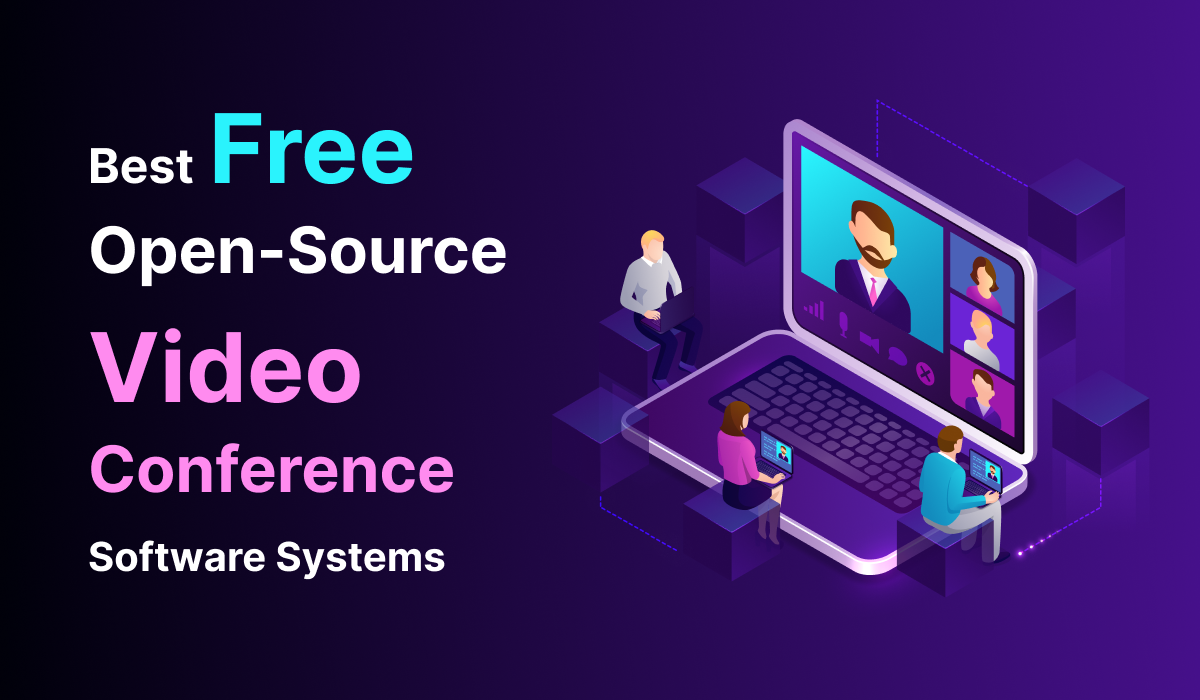Best Free Open-Source Video Conference Software Systems

Introduction
As video conferencing becomes increasingly embedded in our daily lives, whether for work, study, or social interaction, finding the right platform is crucial. While there are countless options available, open-source video conferencing systems stand out for their flexibility, security, and cost-effectiveness. This article will explore seven top-tier open-source video conferencing solutions, each offering unique features and customization options for both web and mobile applications. Whether you're a business, educational institution, or privacy-conscious individual, there's an open-source solution that can meet your needs.
1. Introduction
- The growing necessity of video conferencing in daily life, from work to education to personal communication.
- The advantages of using open-source software: cost-effectiveness, customization, and control over your data.
- A brief introduction to the seven open-source video conferencing systems discussed in the article.
2. Why Choose Open-Source Video Conferencing Solutions?
- Customization and Flexibility: Tailor the software to meet your exact needs, including branding and feature integration.
- Cost Savings: Open-source solutions are free to use and can be hosted on your own servers.
- Security and Data Privacy: Maintain control over your data by hosting the software internally.
- Community and Support: Benefit from a global community of developers contributing to and improving the software.
3. Top 7 Free Open-Source Video Conferencing Systems
plugNmeet
- Overview: plugNmeet is a highly customizable, open-source video conferencing tool that can be integrated into websites, apps, and software.
- Key Features: Custom branding, flexible UI, control over meeting features, and self-hosting options.
- Ideal Use Cases: Companies needing tailored video conferencing integrated into their existing platforms.
Jitsi
- Overview: A powerful set of open-source tools for secure video conferencing, including Jitsi Video Bridge and Jitsi Meet.
- Key Features: Browser-based and mobile apps, easy server setup, integration with various platforms.
- Ideal Use Cases: Businesses and educational institutions seeking a Zoom alternative with open-source flexibility.
BigBlueButton
- Overview: An open-source web conferencing system specifically designed for online education.
- Key Features: Integration with LMS, tools for engagement and analytics, multi-language support.
- Ideal Use Cases: Schools, universities, and online education providers looking for a robust virtual classroom solution.
Jami
- Overview: A decentralized, peer-to-peer messaging and video conferencing application.
- Key Features: No central server, unlimited file transfer, cross-platform support (Windows, macOS, Linux, iOS, Android).
- Ideal Use Cases: Privacy-conscious users and organizations needing secure, Skype-like communication.
Apache OpenMeetings
- Overview: A feature-rich open-source web application for video conferencing, document sharing, and meeting recording.
- Key Features: Whiteboard, collaborative document editing, instant messaging, recording.
- Ideal Use Cases: Businesses and teams requiring a versatile tool for collaboration and virtual meetings.
Nextcloud Talk
- Overview: A secure, open-source video conferencing tool deeply integrated with the Nextcloud ecosystem.
- Key Features: Seamless integration with Nextcloud, file sharing during calls, high privacy standards.
- Ideal Use Cases: Organizations using Nextcloud for collaboration who need integrated video conferencing.
Element (formerly Riot.im)
- Overview: A decentralized communication platform offering end-to-end encryption for messaging and video conferencing.
- Key Features: Community building, text and video communication, secure and private.
- Ideal Use Cases: Teams and communities requiring a Slack alternative with robust security.
4. Comparative Table
- Customization Options: How flexible each platform is in terms of branding and feature adjustments.
- Ease of Setup: How simple it is to deploy each system.
- Mobile and Web Compatibility: Which platforms support both web and mobile applications.
- Security Features: Levels of encryption, data privacy, and compliance with regulations like GDPR.
- Scalability: Ability to handle large numbers of users and growing demands.
5. How to Choose the Right Video Conferencing System
- Identify Your Needs: Determine whether your primary requirement is for education, business, or secure communication.
- Consider Customization: Look at how easily you can tailor the software to your brand and specific requirements.
- Assess Security Requirements: Evaluate the level of security needed, particularly for industries like healthcare or finance.
- Evaluate Integration Needs: Consider how well the software integrates with your existing systems and workflows.
6. Real-World Use Cases and Success Stories
- Examples of organizations that have successfully implemented each software, highlighting benefits and challenges.
- Case Study: A university adopting BigBlueButton for virtual classrooms.
- Case Study: A small business integrating Jitsi Meet for secure client meetings.
7. Conclusion
- Recap of the benefits of using open-source video conferencing systems.
- Final thoughts on the importance of customization, security, and ease of use in selecting the right platform.
- Encourage readers to try out these open-source solutions to find the best fit for their needs.
8. Call to Action
- Invite readers to explore the platforms discussed and start customizing their video conferencing solutions.
- Provide links to setup guides, official documentation, and community forums for additional help.
